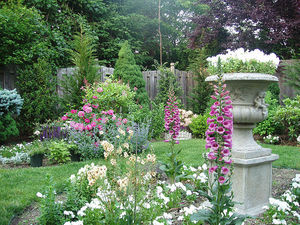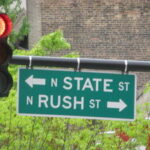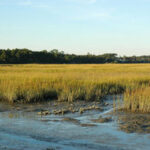The state tree of Mississippi is the Southern Magnolia (Magnolia grandiflora). This sometimes deciduous, sometimes evergreen tree is also known as evergreen magnolia, bull-bay, big-laurel, and large-flower magnolia. The grandiflora can be found growing in the wild from North Carolina south to Florida and west to the eastern regions of Texas. This US native tree can reach heights of 60-90 feet with a truck diameter of 2-3 feet. The southern magnolia is hardy in Zones 6-9.
The grandiflora is well suited for rich, loamy, well-drained, acidic soils, especially near streams and swamps. The soil must be well drained, so outwashes are a choice location. The tree prefers full sun, but it will tolerate partial shade.
The southern magnolia is a beloved ornamental tree. The white flowers can measure 8-12 inches across and are fragrant, and the leathery leaves are 5-8 inches long and a rich green. The blooms arrive in April through June, depending on the cultivar. The monoecious flowers are pollinated by insects and seed production is prolific. The fruit becomes ripe toward September. The magnolia fruits are reddish-brown cone shapes that can measure 4 inches long. When the fruit is fully mature, there are red bean-shaped seeds that emerge from the cone hanging from threads. The seeds are eaten by squirrels, opossum, quail, and wild turkey.
There are some cultivars that survive in Zone 5, but the southern magnolia belongs to the South. The magnolia is a splendid choice for a street tree. It is often seen as a specimen tree, or used to frame an entry way, path, or vista. The magnolia is seen in residential, golf course, and park landscapes. When planted in rows, the magnolia trees provide a good buffer.
The canopy can spread 30-50 feet, so this is a tree that needs room. The pyramidal growth habit is dense and branches can remain at ground level. There is nothing that grows well beneath a magnolia. The tree benefits from a pruning after flowering is finished. There is considerable litter to clean up because the thick leaves do not decompose easily.
In the wild, the seeds will germinate under a dense canopy, but not under the magnolia trees. In cultivation, the trees grow rapidly from seed. Some cultivars are grafted or started from cuttings. Magnolias for the trade should be grown in a container or balled in burlap since they do not do well when transplanted.
The southern magnolia is harvested commercially for furniture and veneers. The wood is dense, heavy, and very hard. Some research indicates the leaves, fruit, bark, and wood exhibit potential in pharmaceutical applications.
There are more than 100 cultivars that are or have been available in the trade.
The southern magnolia has predators. A dry winter can damage or kills trees. Seedlings are especially susceptible to frost. Some fungi cause heartrot, and magnolia scale (Neolecanium cornuparyum) is known to kill branches or entire trees. The tree is also susceptible to aphids and leaf spot.
Sources
Magnolia grandiflora, US Forest Service, http://www.fs.fed.us/database/feis/plants/tree/maggra/all.html
Magnolia grandiflora, FloriData, http://www.floridata.com/ref/m/magno_g.cfm
Magnolia grandiflora, University of Connecticut, http://www.ipm.uconn.edu/Plants/m/maggra/maggra1.html




